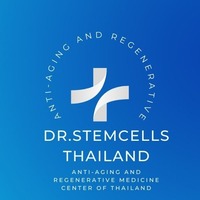Shingles (Herpes Zoster)

Shingles (Herpes Zoster): Overview, Symptoms, Causes, and Treatment
Shingles (Herpes Zoster) is a viral infection caused by the reactivation of the varicella-zoster virus-the same virus responsible for chickenpox. After a person recovers from chickenpox, the virus remains dormant in nerve tissues and can reactivate years later as shingles.
Symptoms
- Pain, burning, or tingling often precedes the rash.
- A red rash typically appears a few days after pain onset, usually as a stripe of fluid-filled blisters on one side of the body, often wrapping around the torso.
- The rash can also appear on the face, neck, or near one eye.
- Other symptoms include itching, sensitivity to touch, fever, headache, light sensitivity, and fatigue.
- Pain can be intense and sometimes mistaken for heart, lung, or kidney problems.
- Some people experience pain without ever developing the rash.
Causes and Risk Factors
- Caused by reactivation of varicella-zoster virus in nerve roots after years of dormancy.
- The exact trigger for reactivation is unclear but is associated with weakened immunity due to aging, stress, illness, or immunosuppressive conditions (e.g., cancer, HIV, chemotherapy).
- More common in people over 50 and those with weakened immune systems.
Contagiousness
- Shingles can spread the varicella-zoster virus to people who have never had chickenpox or the vaccine, causing chickenpox in them.
- Transmission occurs through direct contact with open shingles sores.
- People with shingles are contagious until blisters crust over.
- Avoid contact with pregnant women, newborns, and immunocompromised individuals until healing.
Complications
- The most common complication is postherpetic neuralgia, persistent nerve pain lasting months or years after rash resolution.
- Other complications include eye infections (which can cause vision loss), bacterial skin infections, and rarely, inflammation of the brain (encephalitis).
Treatment
- No cure exists, but early antiviral treatment (within 72 hours of rash onset) can shorten the illness, reduce severity, and lower risk of complications.
- Common antivirals: acyclovir, valacyclovir, famciclovir.
- Pain management includes:
- Over-the-counter pain relievers
- Prescription medications such as anticonvulsants (gabapentin), tricyclic antidepressants (amitriptyline), topical agents (lidocaine, capsaicin), and corticosteroids (in some cases).
- Additional care: cool compresses, lotions to ease itching, antibiotics if bacterial infection occurs.
- Vaccination is recommended to lower the risk of shingles and its complications.
When to See a Doctor
- If rash or pain occurs near the eye (risk of permanent eye damage).
- If you are over 50 or have a weakened immune system.
- If rash is widespread or very painful.
- Early medical attention improves outcomes.
Summary Table
| Aspect | Details |
|---|---|
| Cause | Reactivation of dormant varicella-zoster virus (chickenpox virus) |
| Symptoms | Pain, burning, tingling, red rash with blisters on one side, itching, fever, headache |
| Risk Factors | Age >50, weakened immune system, stress, illness |
| Contagiousness | Contagious via direct contact with blisters until crusted over |
| Complications | Postherpetic neuralgia, eye damage, bacterial infections, encephalitis |
| Treatment | Early antiviral therapy, pain management, supportive care, vaccination |
References
- A comprehensive, peer-reviewed overview of shingles (herpes zoster)-covering its virology, symptoms, risk factors, complications (including postherpetic neuralgia), diagnosis, and evidence-based treatment options-is provided in “Herpes zoster: A Review of Clinical Manifestations and Management” (DOI: 10.4103/ijmr.IJMR_2665_21).
Shingles is a painful viral infection caused by reactivation of the chickenpox virus. Early antiviral treatment and vaccination are key to reducing severity and preventing complications such as long-lasting nerve pain.















